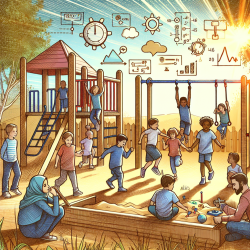Introduction
In the realm of child development and therapy, understanding the broader societal factors that influence children's lives is crucial. One such factor is the legal framework surrounding child marriage, which has profound implications on gender norms and intimate partner violence (IPV). Recent research, titled Improved child marriage laws and its association with changing attitudes and experiences of intimate partner violence: a comparative multi-national study, sheds light on how changes in child marriage laws can lead to improved outcomes in these areas.
Key Findings
The study utilized data from the Demographic and Health Surveys (DHS) and examined the impact of changing child marriage laws in 19 low and middle-income countries. The findings are compelling:
- Countries that raised the legal age of marriage to 18 saw a significant improvement in attitudes towards domestic violence among both men and women.
- Women in these countries experienced a reduction in physical and sexual IPV, with odds ratios of 0.65 and 0.63, respectively.
- However, there was an increase in reported emotional violence, suggesting a need for further investigation into this aspect.
Implications for Practitioners
For practitioners in the field of speech language pathology and child development, these findings underscore the importance of advocating for and supporting legal reforms that promote gender equality. Here are some actionable steps practitioners can take:
- Advocacy: Support policies that aim to increase the legal age of marriage and participate in community outreach programs that educate about the harms of child marriage.
- Education: Incorporate discussions about gender norms and IPV in therapy sessions, especially for adolescents who may be at risk.
- Research: Encourage further research into the effects of legal reforms on IPV and child development outcomes.
Encouraging Further Research
While the study provides significant insights, it also highlights areas that require further exploration. Practitioners are encouraged to delve deeper into understanding the nuances of emotional violence and its reporting. Collaborating with researchers to design studies that focus on the long-term impacts of child marriage laws on child development can lead to more informed practices and policies.
Conclusion
The research presents a strong case for the role of national policy in shaping societal norms and reducing IPV. As practitioners dedicated to creating positive outcomes for children, it is imperative to engage with these findings and contribute to the broader dialogue on gender equality and child protection.
To read the original research paper, please follow this link: Improved child marriage laws and its association with changing attitudes and experiences of intimate partner violence: a comparative multi-national study.










